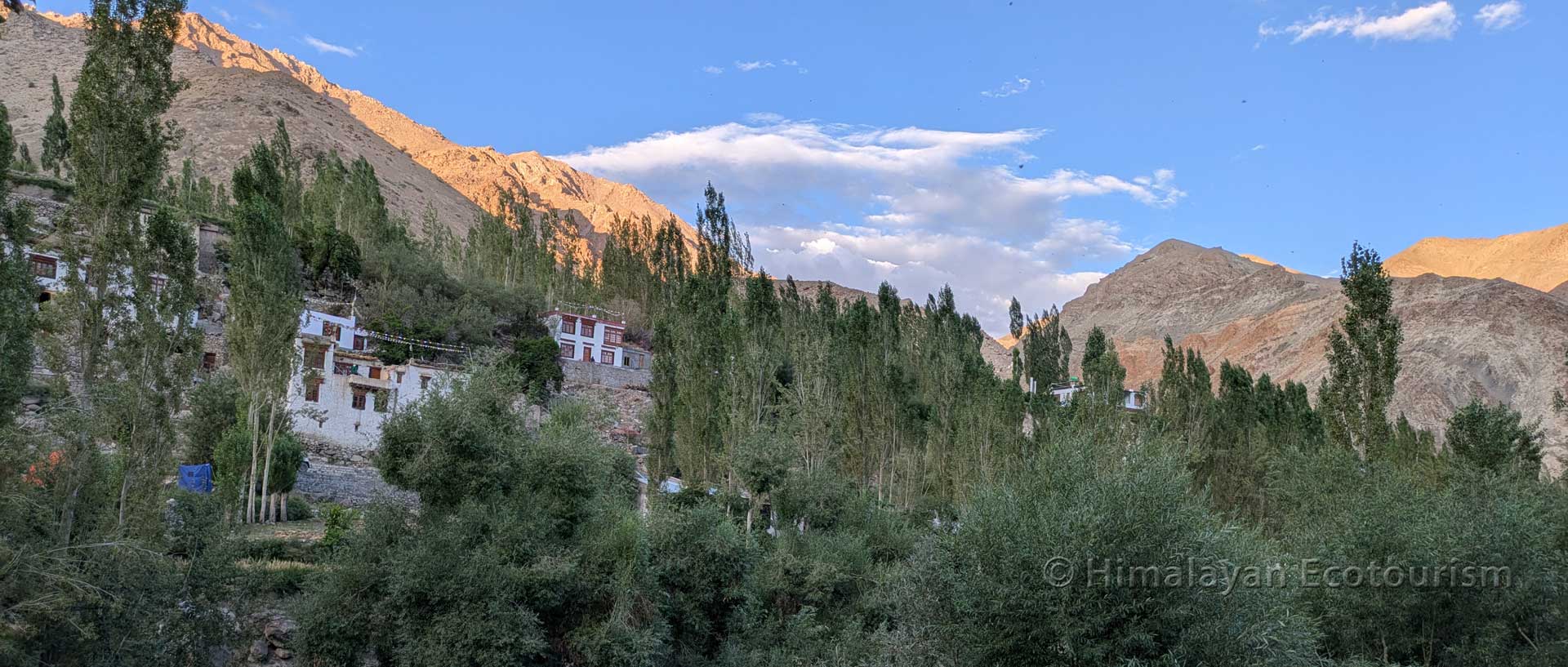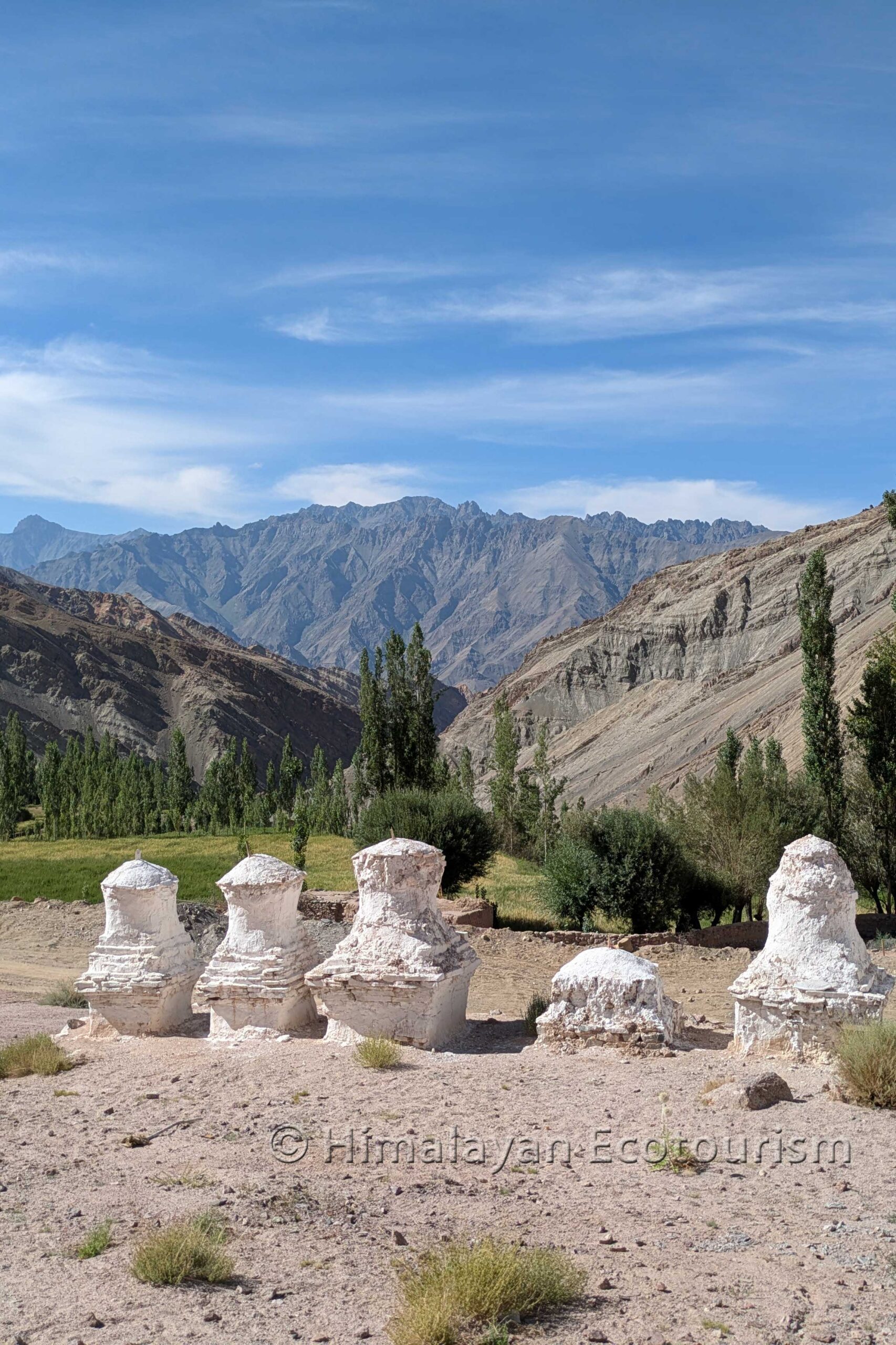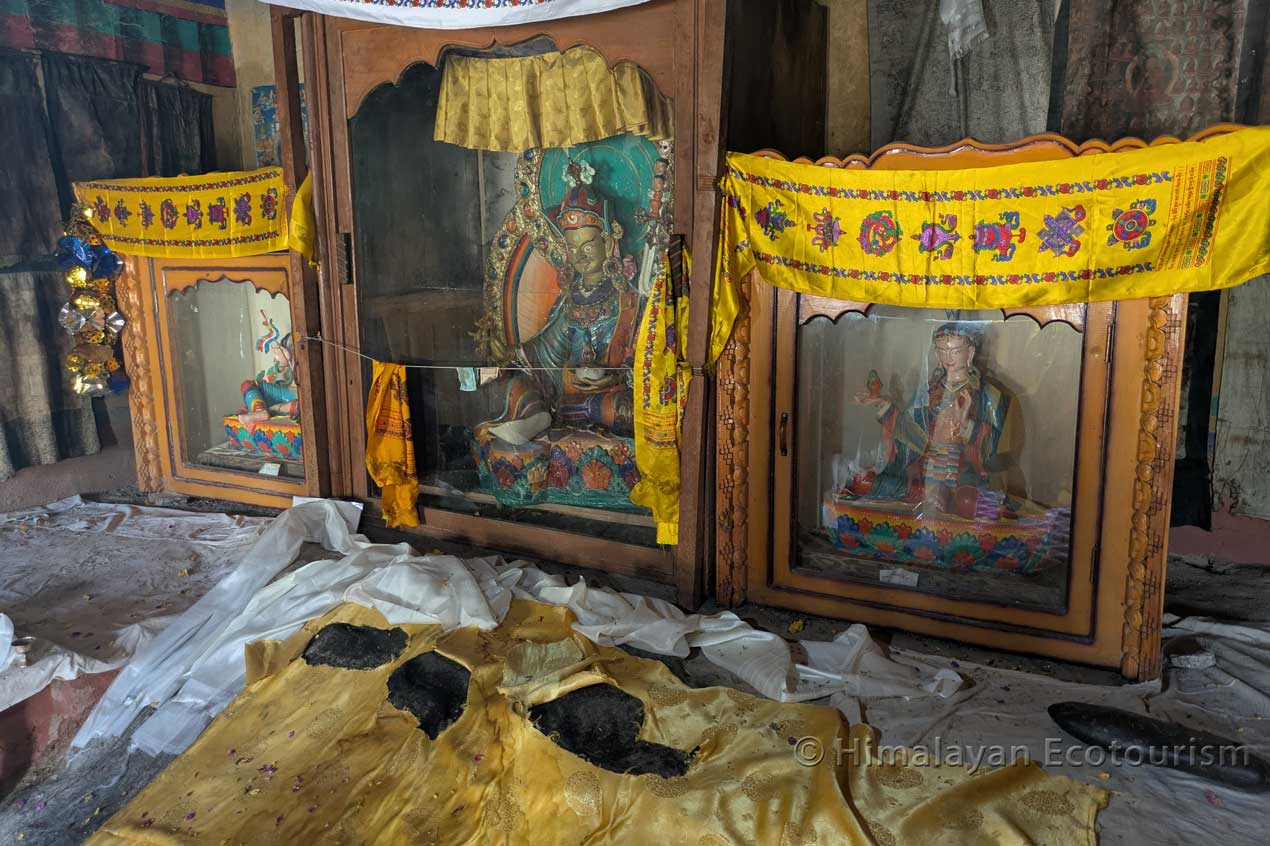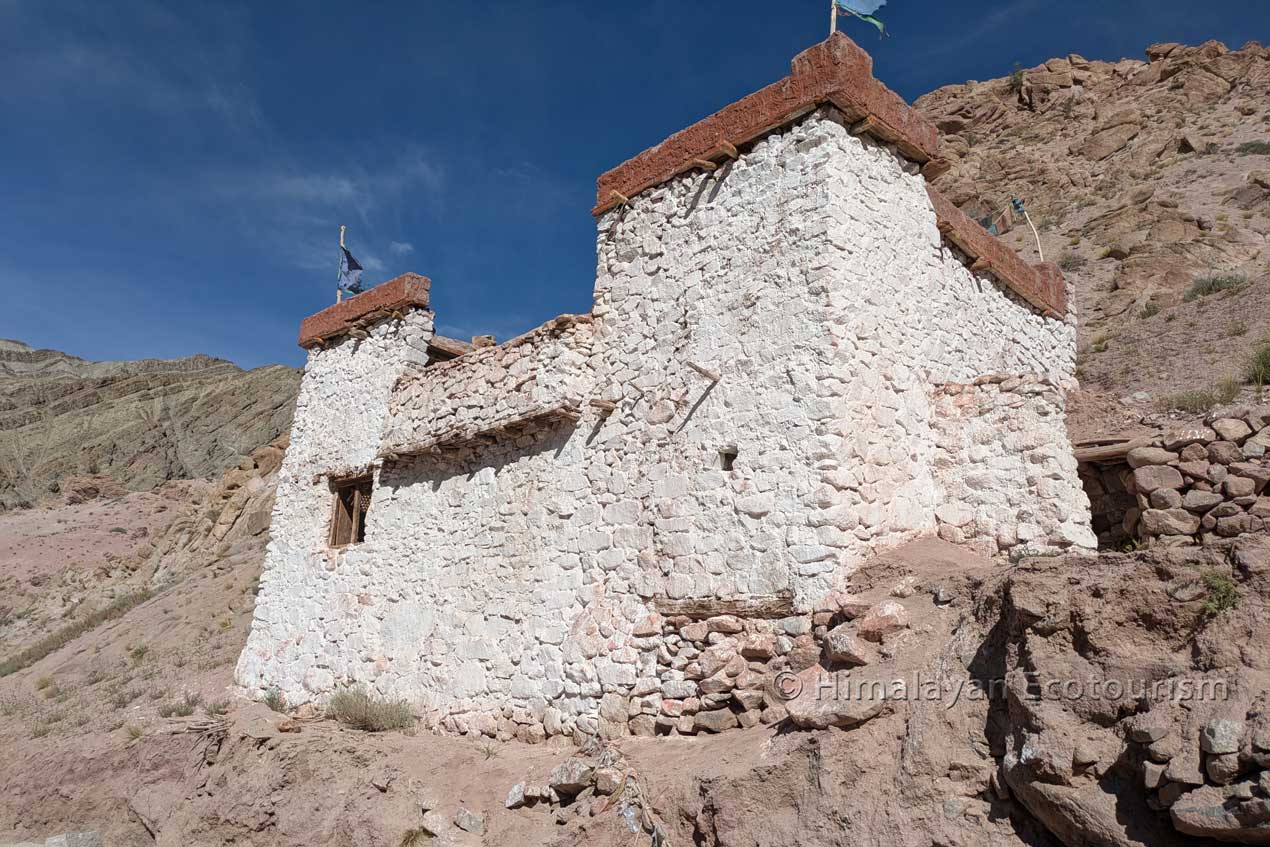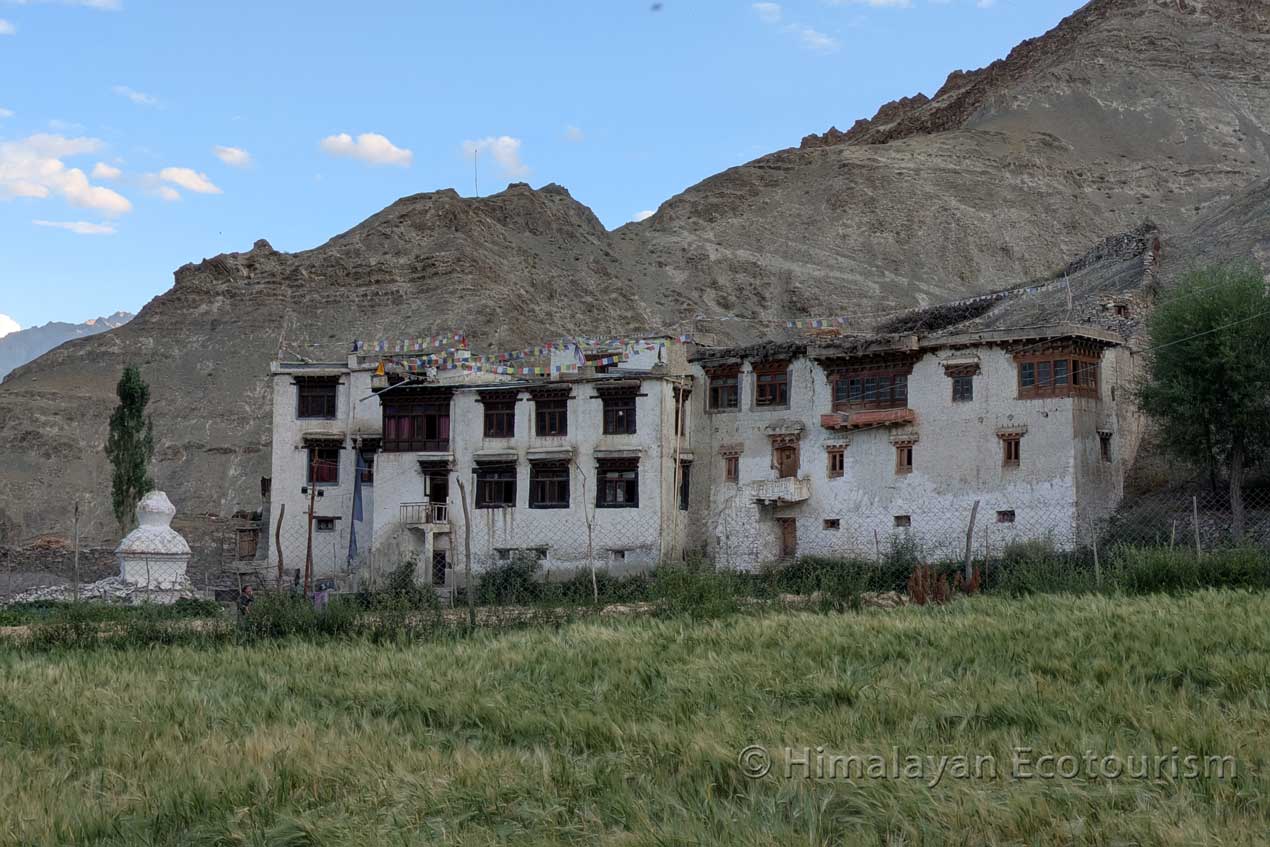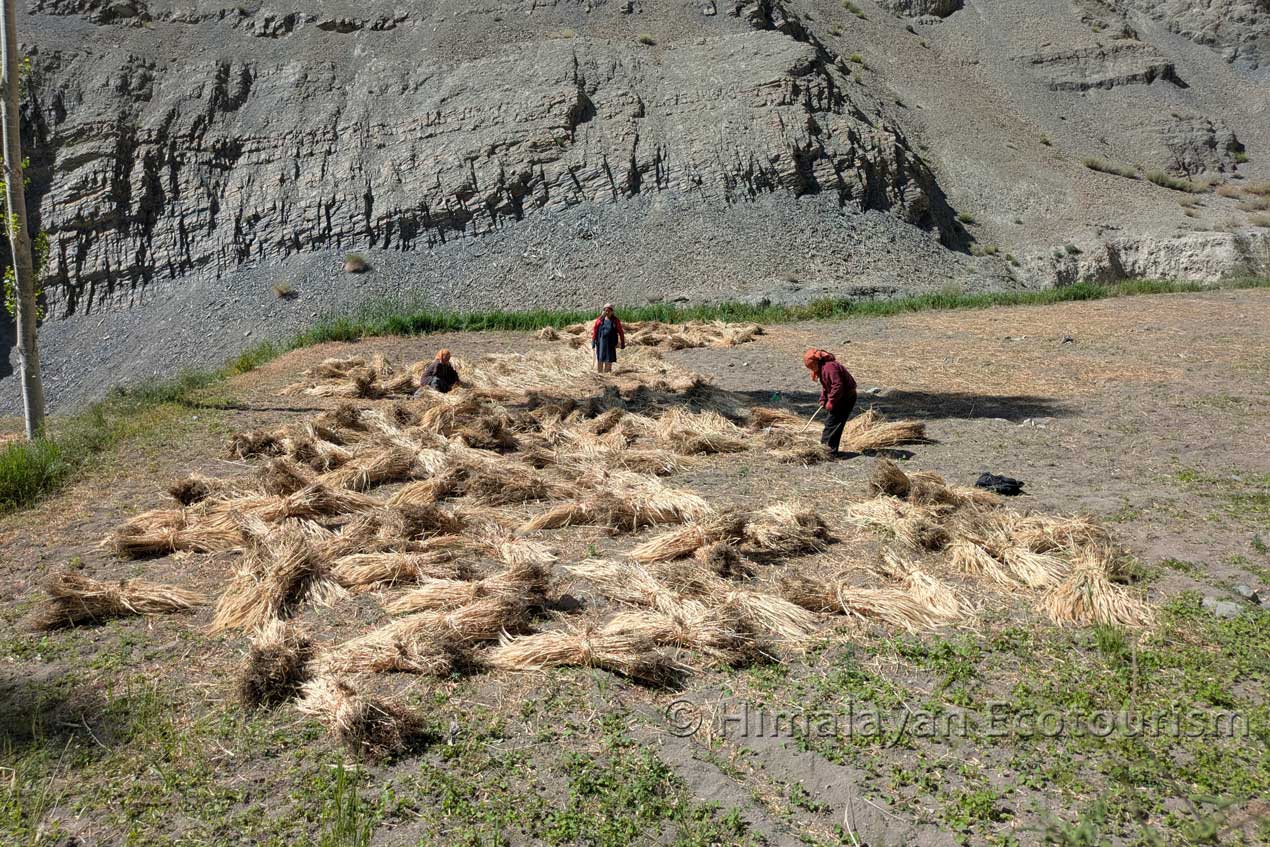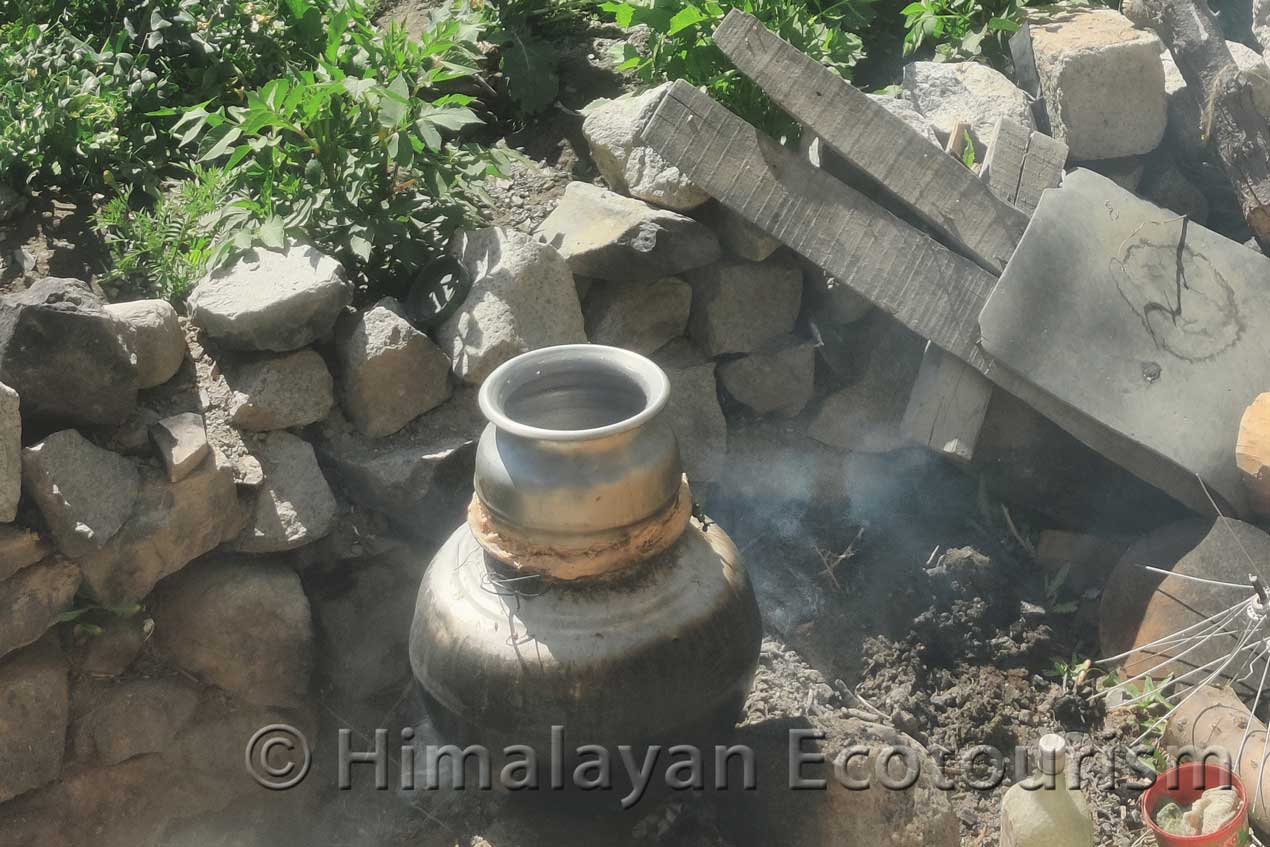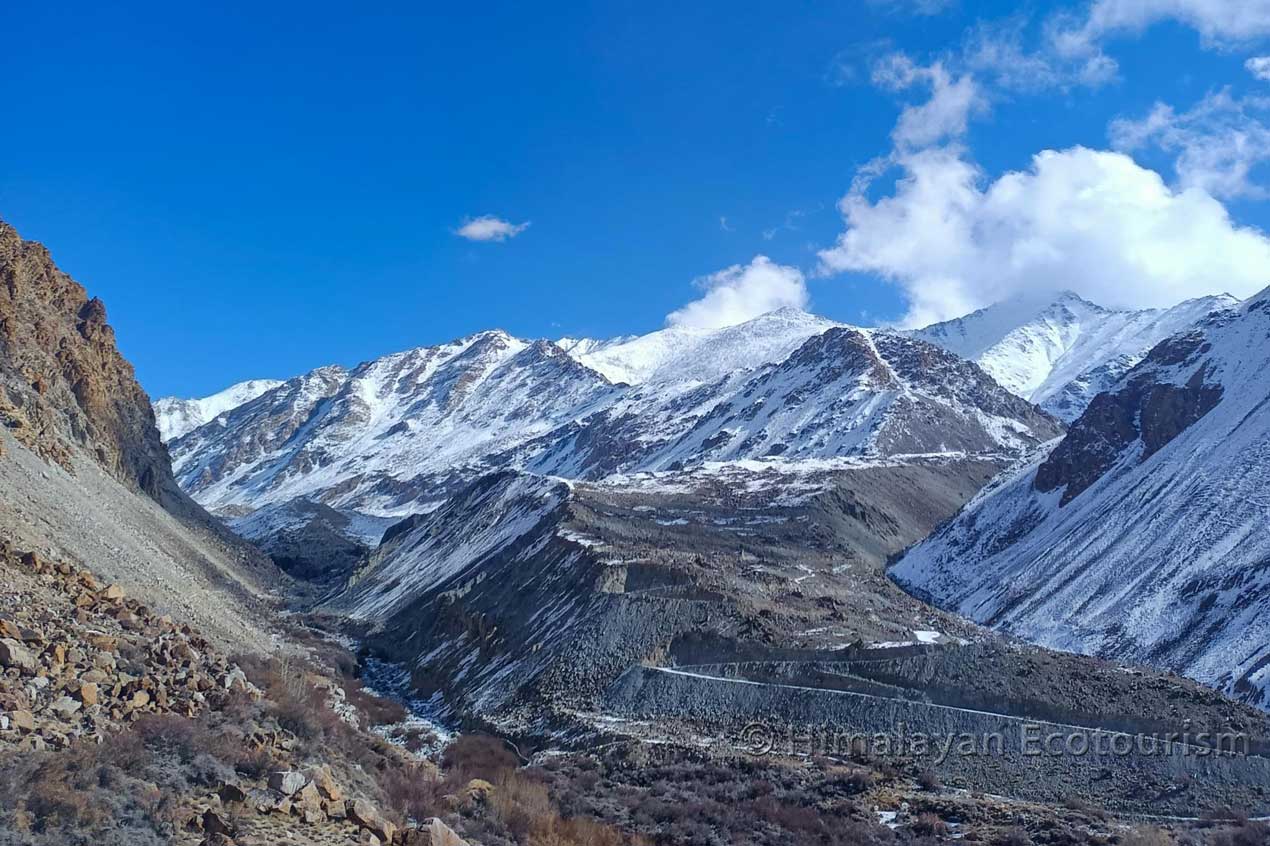Skindiyang Village – Echoes of an Ancient Ladakh

A community shaped by snow, stone and spirit
Tucked away in the mountains of western Ladakh, Skindiyang is a quiet village where time seems to move more slowly. With its red-hued peaks, fertile fields, and rare wildlife such as ibex and snow leopards, the village is as captivating as it is remote. Life here revolves around agriculture, traditional irrigation from melting snow, and strong community ties.
Though little known to travelers, Skindiyang holds a rich cultural and spiritual heritage, from its ancient monastery linked to Guru Padmasambhava to meditation hermitages and summer pastures that tell stories of Ladakh’s past. Today, the village is opening its doors to responsible tourism with the support of Heco, offering visitors a chance to experience authentic Ladakhi hospitality while contributing to the community’s sustainable future.
About Skindiyang
The name Skindiyang has two possible meanings: “Full of Ibex,” as the area is home to these animals, or “Long Autumn,” since its trees remain green long after neighboring villages have shed their leaves for winter.
The surrounding red-hued mountains are also prime habitat for the elusive Snow Leopard, whose camouflage blends perfectly with the landscape.
In earlier times, Skindiyang was home to about 15 large households, as polygamy was commonly practiced. With this tradition no longer followed, families have divided into smaller units, and today the village counts around 40 households. This shift has also led to the division of land into smaller plots, shaping the way agriculture is practiced in the village today.
Agriculture remains the backbone of village life, with crops such as barley, wheat, vegetables, and apricots grown using traditional irrigation systems. With glaciers retreating, the village now relies mainly on snowmelt streams diverted by hand-dug canals. Water is shared with neighboring villages, and in years with little snowfall, Skindiyang can suffer serious shortages. To address this, Heco is planning water harvesting projects to build resilience against drought.
Facilities in the village are simple: there is a government school up to 8th grade, and a few homestays that welcome occasional visitors. Skindiyang also lies along an extended route of the Sham Valley trek, bringing some trekkers who pass through on their way to Tingmosgam or Tia. With Heco, new initiatives are being developed to support homestays, improve hospitality, and highlight the unique heritage of this hidden corner of Ladakh.
How to reach Skindiyang
Skindiyang is a remote and tranquil village in the Leh district of Ladakh, located about 104 km from Leh (roughly a two-hour drive). The journey begins along the NH-1, passing through Nimoo, Saspol, Alchi, and Khaltse, before turning onto a more rugged track that leads to the village from Khaltse. With its unpaved roads and lack of internet connectivity, Skindiyang offers travelers an escape into authentic Ladakhi life.
Along the way, visitors can stop at the historic Basgo and Alchi Monastery, while the scenic drive reveals dramatic mountain landscapes and the ever-present Indus River.
Things to do in Skindiyang village
Skindiyang Monastery
Nestled amidst the calm landscapes of Skindiyang village, the Skindiyang Monastery is a place of deep spiritual significance, treasured by locals and pilgrims alike. The village monastery preserves the sacred footprints and staff marks of Guru Padmasambhava (Guru Rinpoche), who is believed to have visited in the 8th century during his journey to spread Vajrayana Buddhism across the Himalayas.
Statues of the Guru and his disciple stand alongside the sacred imprints. Annual celebrations take place on the 10th day of the 6th month of the Tibetan calendar, drawing villagers and pilgrims alike. In February/March, a seven-day prayer session marks the sacred Buddhist prayer month.
For those seeking a deeper cultural experience, timing a visit with the monastery’s festivals or prayer sessions offers a rare opportunity to witness Ladakh’s living Buddhist traditions, where faith, history, and community come together in an unforgettable celebration of devotion.
Contact us for planning a visit to the Skindiyang village
Hermitage (Samskhang)
The hermitages of Ladakh are an emblem of Ladakh’s Buddhist traditions. Dating back to the 18th century, the hermitage of Skindiyang served as a secluded retreat for monks and wandering lamas seeking solitude, meditation, and spiritual awakening. This historic meditation retreat features a meditation chamber, a kitchen, an offering window, and a chimney. It offers a rare glimpse into Ladakh’s divine traditions.
This site has been preserved in its original form, remaining untouched by the modern renovations, thus retaining the authenticity and atmosphere of ancient times.
The Dok (Summer Pasture)
Visit Skindiyang’s traditional Dok, or summer pasture, where villagers once brought their herds of yaks, cows, and goats to graze on the high-altitude meadows.
These Doks were not just grazing grounds but also seasonal homes, where families lived in harmony with nature during the warmer months.
The centuries-old stone huts and wooden enclosures still stand, whispering stories of resilience, community, and a lifestyle deeply connected to the land. Walking through this serene landscape, you can almost sense the rhythm of pastoral life, the sound of cowbells, the laughter of herders, and the quiet prayers offered to the mountains.
For travelers, visiting the Dok is not just a scenic experience but an opportunity to understand Ladakh’s cultural roots.
Agriculture & Volunteering
Agriculture lies at the heart of Skindiyang’s identity and economy, shaping the daily rhythm of life in this Ladakhi village. At an altitude where survival depends on harmony with nature, the villagers have mastered the art of high-altitude organic farming, nurturing crops with techniques passed down through generations.
Visitors can witness or even participate in the cultivation of barley, wheat, cabbage, cauliflower, carrots, and apricots that sustain local families throughout the year. For those seeking a deeper connection, volunteering opportunities are especially rewarding. During the harvest season, visitors are warmly welcomed to join local farmers in reaping crops, threshing barley, collecting apricots, and learning time-honored techniques of food preservation.
Whether one chooses to observe, learn, or lend a hand, agricultural volunteering in Skindiyang offers a unique opportunity to live like a local, immerse oneself in Ladakh’s rural heritage, and form meaningful connections with the people who call these rugged landscapes home.
Local Drinks
No visit to Skindiyang is complete without experiencing its warm hospitality, often expressed through the sharing of traditional Ladakhi drinks. Beyond the well-known Chhang – a mildly alcoholic beer brewed from fermented barley – the village also produces Desi Arak, a locally distilled spirit often compared to vodka but with a distinctly Ladakhi character.
Arak is typically made by distilling fermented barley or wheat, resulting in a smooth, clear liquor enjoyed during celebrations, festivals, and social gatherings.
Travelers who participate in village experiences may even get the chance to witness the traditional distillation process, where Arak is carefully prepared using age-old techniques over wood-fired stoves. Learning about how these beverages are made offers fascinating insights into Ladakh’s self-sustaining lifestyle, where nothing from the harvest goes to waste.
Trekking around Skindiyang
Day Hike
Embark on a day hike in Skindiyang village, where nature, culture, and history blend seamlessly. The trail begins with a gentle ascent along sparkling water stream. As you follow the traditional grazing paths, once used by villagers to lead their yaks, cows, and goats to summer pastures, you’re tracing footsteps that go back generations.
Multi-day Treks (5–7 days)
The Sham Valley trek, often called the baby trek of Ladakh, is a classic route that traditionally runs from Likir to Tingmosgang. It is known for its moderate difficulty and beautiful landscapes, making it popular with first-time trekkers in Ladakh. However, in recent years much of the route has been connected by road, which has taken away some of its original charm.
Skindiyang now offers an exciting extension to the Sham Valley trek, one that still preserves the authentic trail experience. The road ends at Tia village, from where trekkers can continue on foot across the Timong La and Cham La passes to reach Skindiyang. Here, travelers spend the night in the village, experiencing local life and hospitality away from the main tourist trail.
From Skindiyang, trekkers have two options:
- Take a rest day to explore the village, its monastery, and surrounding landscapes.
- Continue trekking over another pass to the village of Nyarmu, adding a road-free day to the journey.
Through Heco’s Re-inventing Tourism in Ladakh program, this new “baby trek” is being promoted as a way to bring responsible travelers to Skindiyang and generate sustainable income for the villagers, while keeping the spirit of Ladakhi trekking alive.
Skindiyang with Heco
Through our Re-inventing Tourism in Ladakh program, Heco is working with Skindiyang to improve homestays, provide training in English and hospitality, and develop new community-based tourism activities. At the same time, our Greening Ladakh project aims to address climate challenges through water harvesting and ecological restoration.
By visiting Skindiyang with Heco, you contribute directly to both the cultural preservation and the sustainable future of this remarkable village.
Treks in Ladakh
Our selection of treks in Ladakh and Zanskar, one of the most stunning region on earth !
Ladakh village experience
For the real travellers who want to discover the local culture and its landscape
Ladakh Experience journey
Get an idea of what travelling with a social enterprise really means in Ladakh.



